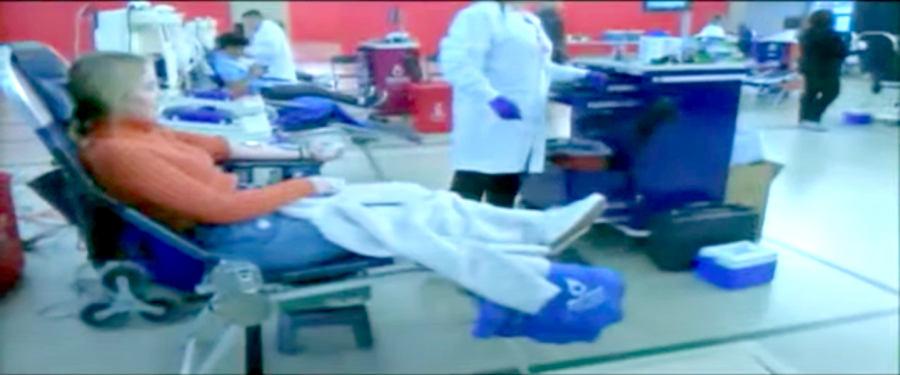The Ins and Outs of Blood Donation
November 23, 2020
Picture this: you urgently need blood after being involved in a terrible incident when the Red Cross arrives, blood on hand and ready to help. Blood transfusions are something that happens to many Americans each day, which is why the Red Cross needs a hefty supply of blood to give to those who need it. Drives to collect blood are held all across the country and even here in Eden Prairie. With the National Honor Society’s blood drive that happened at St. Andrew’s Church this November, it makes you wonder a few things – what does donating blood actually do? How does the process work?
There is one big reason you should consider donating blood: it is a life-saver. According to the American Red Cross, 36 thousand units of red blood cells are needed a day in the U.S. alone. That equates to someone requiring a transfusion once every two seconds! They also state how one donation has the potential to save up to three lives. It doesn’t take a terribly long time to donate either (roughly 30 minutes), so all you need to do is show up for a few minutes and you can help a handful of people.
So, how exactly do you donate? The process is fairly easy. When you arrive and your name is called, a volunteer will do a quick and easy medical exam, checking your temperature, pulse and nutrient levels in your blood. Then the donation begins. The volunteer will sterilize a part of your arm with a visible vein (usually the interior of the elbow) and insert a needle to start drawing. After about ten minutes and a pint of blood has been taken, you are free to sit in a recovery area where probably the best part of the procedure occurs – you get free cookies! This is to help replenish your blood and prevent you from passing out after the donation. You’re free to leave after a few minutes of resting.
Once you’ve donated, there are a few steps taken before your blood reaches a patient. The first two steps occur simultaneously: processing and testing. Processing involves separating the four components (red and white blood cells, platelets, and plasma), while tubes taken at the donation are tested for various conditions such as HIV or leukemia.
After all the tests come back negatively and your blood has been sorted, it gets stored in fridges or freezers until it’s needed. When it is, it gets distributed to a local hospital where the recipient receives a transfusion.
There are a few more technical restrictions placed on teenage donors. You have to be at least 16 (with a parent’s permission – 17 without), meet certain height / weight requirements, and have not donated within the past 56 days. Other general rules include feeling generally healthy and not having certain medical conditions.
If you’re interested in donating, there are several local drives happening this month in the metro. You can find out the closest one to you at www.redcrossblood.org/give.html/find-drive.




